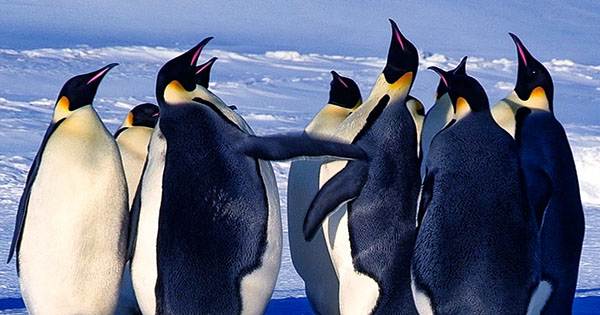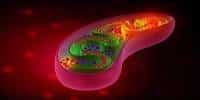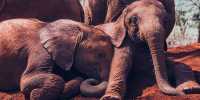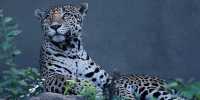Penguins can connect their mates’ squawks to their physical appearance, according to new research — a skill previously unknown in the bird domain (except, of course, for crows.) The study, which was published this week in Proceedings of the Royal Society B, reminds us “humans have the ability to envision familiar persons solely by hearing their voice.”
“This seemingly simple process, known as cross-modal individual recognition, necessitates our brain’s simultaneous integration of input from many sensory modalities and identification of an individual based on a unique set of multimodal traits.” This skill — the ability to integrate diverse bits of information from many senses – is a hallmark of higher-order cognitive function, therefore determining which animals can do it is crucial. It has also been seen in lions, goats, horses, and rhesus macaques, in addition to our ever-smart crow pals (who are, in so many ways, the crows of the mammal world.)
Penguins, notably African penguins, can now add to the list. The shores of Namibia, South Africa, and (appropriately) the Penguin Islands are home to these small birds. They are also known as jackass penguins for reasons that are not quite as amusing as you may think. Living on the seashore, surrounded by rocks, wind, and ocean, they have evolved to be extraordinarily noisy and flashy, with each penguin having its own distinct pattern of spotted marks on its chests. However, according to research lead author Luigi Baciadonna, this combination of habit and habitat has made the penguins so skilled.
“Imagine a large [penguin] colony in this extremely difficult environment, with plenty of wind noise and background noise,” he told New Scientist. “And it’s possible that they rely on vocal communication, like as calling to each other as they return from a hunting excursion.” Among the waves and boulders, their particular pattern of black specks [may become difficult to decipher]. When one of the cues is unavailable, the capacity to combine both visual and auditory identities may be required.”
So, how does one go about deciphering a penguin’s higher-order cognitive functions? “Evidence for cross-modal individual recognition […] has depended on variations of expectation violation paradigms,” the report explains for nonhuman animals. To put it another way, you are attempting to perplex the critter. The scientists separated ten penguins from a colony of 17 in the Zoomarine Marine Park in Torvaianica, Italy, into pairs. The pairs would be friends at times and partners at other times — African penguins are jackasses, but they are monogamous jackasses. Worth keeping walked in and took one penguin away, leaving the other on their own; around 20 seconds later, a squawk could be heard from behind the door their admirer had departed via.
That squawks, unbeknownst to the ‘guins, was probably a forgery — one of many pre-recorded penguin noises from other colony members. As a result, while the penguins occasionally heard their partner’s voice from behind the door, they also occasionally heard the squawk of a different penguin companion.
The researchers noticed that they reacted differently when this happened. The test penguins looked to the door in response to every recorded squawk, but they did so five times faster when the call from behind the door did not match the penguin that had just passed through it. “Basically, if the call comes from the same guy who just left a few seconds earlier, it’s more likely that the call belongs to that guy, not some random [guy],” Baciadonna told New Scientist. “We term this a ‘violation of expectation’ when there is a mismatch between the visual and aural data, and they react more swiftly.”
This significant finding sheds light on the evolution of communication and cognition – but the researchers say it is not entirely surprising. “The capacities to identify one’s friendly neighbors both visually and audibly may have developed to assist prevent unnecessary conflicts,” they write, based on the African penguins’ natural territory and behavior. “Around 65 [million years ago], penguins split from other birds and lost their capacity to fly.” The paper says, “They are phylogenetically distant and unique from most other birds.” “Our latest findings reveal that African penguins internalize their colony mates, implying that this ability is far more prevalent among bird taxa than previously thought.”















